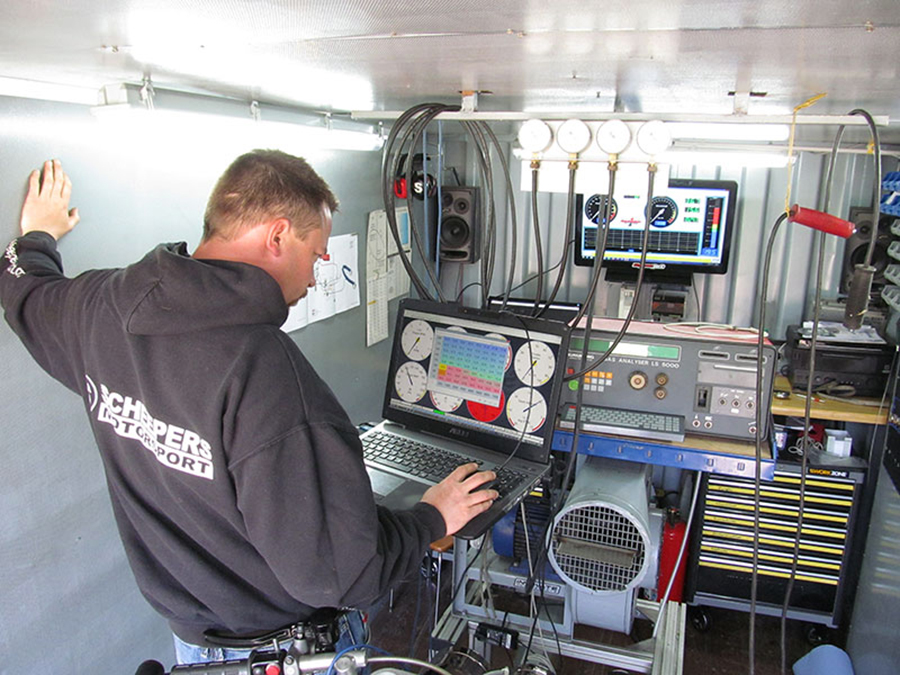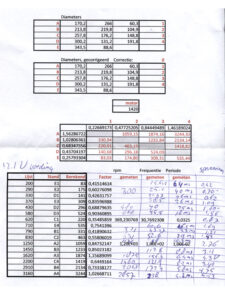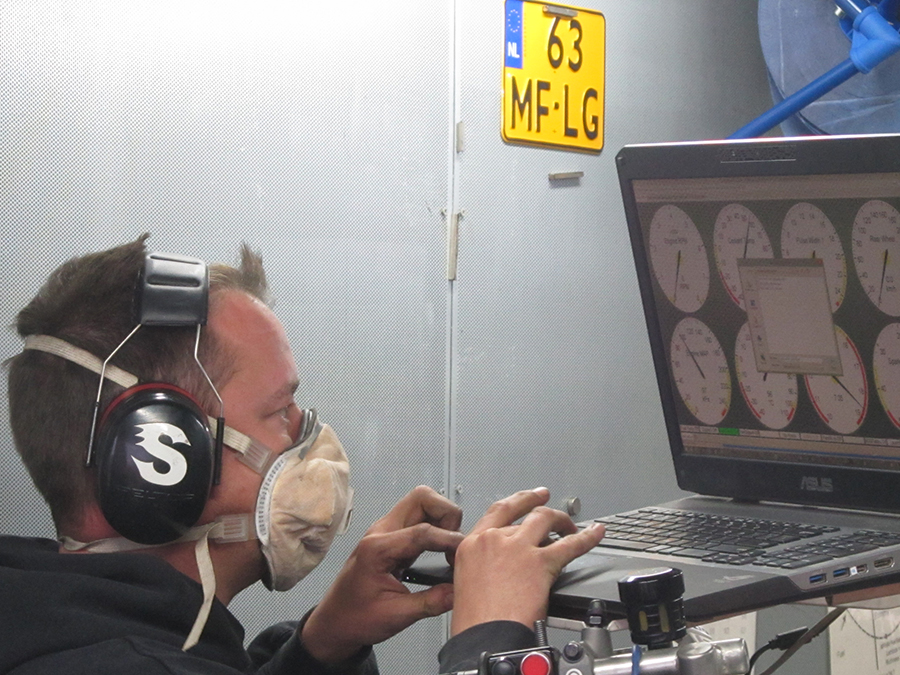It’s been a year since report #7; about time to move on to #8.
Yes, my bike is street legal but I still don’t allow it to get on the road. It has proven itself to be rideable but what I want is performance, letting out what’s potential inside. And that’s certainly more than 357 bhp at the rear wheel we measured in April 2012.
 But before tuning I’d to take some time for minor and major repair: the bike suffered a lot from the salty conditions at the RDW test facility. Half an hour of testing was enough to corrode all aluminum and bare iron parts.
But before tuning I’d to take some time for minor and major repair: the bike suffered a lot from the salty conditions at the RDW test facility. Half an hour of testing was enough to corrode all aluminum and bare iron parts.
Even more alarming was that the bike spilled coolant just minutes after the tests had ended. Bad luck but still I consider myself lucky it happened after the tests…
Play the video to see where the leak is located: between the left cylinder head and intake manifold.
Easy to repair? Nope …
On a turbo bike intake air cooling is eminent for engine performance (see report #6). So I continued optimizing the water-methanol injection system.
I added two pressure switches for a two-stage injection system: the first one (SQ1) activates the first spray at 0.25 bar, the second one (SQ2) adds the second spray at 0.75 bar turbo pressure.
 Like so many times before I visited Technisch Bureau Holl. And like all the times before they patiently helped me find the connecting components.
Like so many times before I visited Technisch Bureau Holl. And like all the times before they patiently helped me find the connecting components.
 To pressurize the air bottle to 20 bar I tried several 12V electric pumps: their specs were promising but none of them met the expectation. One of them even caught fire. Crap.
To pressurize the air bottle to 20 bar I tried several 12V electric pumps: their specs were promising but none of them met the expectation. One of them even caught fire. Crap.
I’m building a static pressure system on my bike so why not a static refill station? For half the money of a pump I bought a 200 bar diving bottle. Just perfect.
 In the mean time Peter Scheepers improved his dyno test facility. He added a huge air brake to delay acceleration: very important when tuning a turbo bike.
In the mean time Peter Scheepers improved his dyno test facility. He added a huge air brake to delay acceleration: very important when tuning a turbo bike.
… and Niels the hardware.
On October 5 2015 Peter and I had another dyno day. A facemask was more essential then ever before: you don’t want to inhale exhaust gas nor burned water-methanol as it might turn in to formaldehyde gas.
Sadly the slip sensor did not live up to its hopes and expectations: for whatever reason the results were corrupt and thus useless. Damn.
We decided to enlarge the centrifugal weights on the clutch. A week before the test I’d spent a full day to egalize the clearance of the clutch to 0.7 mm: getting it exactly right is crucial for grip.
Both changes resulted in good grip: one test gave us 341.8 bhp and 491.2 Nm torque at the rear wheel. Not bad but not good as well: these are not the numbers I’m aiming for.
I tested the system with air. The lower switch activates left and right spray individually. The top switch activates both nozzles simultaneously.
Works just fine. I’m curious what it will bring on the dyno.
So, what’s next? Continue testing and tuning, that’s what’s next. I made a (ever growing) to-do list for the next dyno day with Peter and Niels. Parallel to that I recently contacted some experts on the combination ‘V8 + turbo’ to discuss the possible bottlenecks in the system.
Am I looking forward to that? Yes, of course. Discuss, plan, develop, mill, lathe, weld and test: that’s what R&D a.k.a one-off bike building is all about.
So, again: to be continued … here.



























































